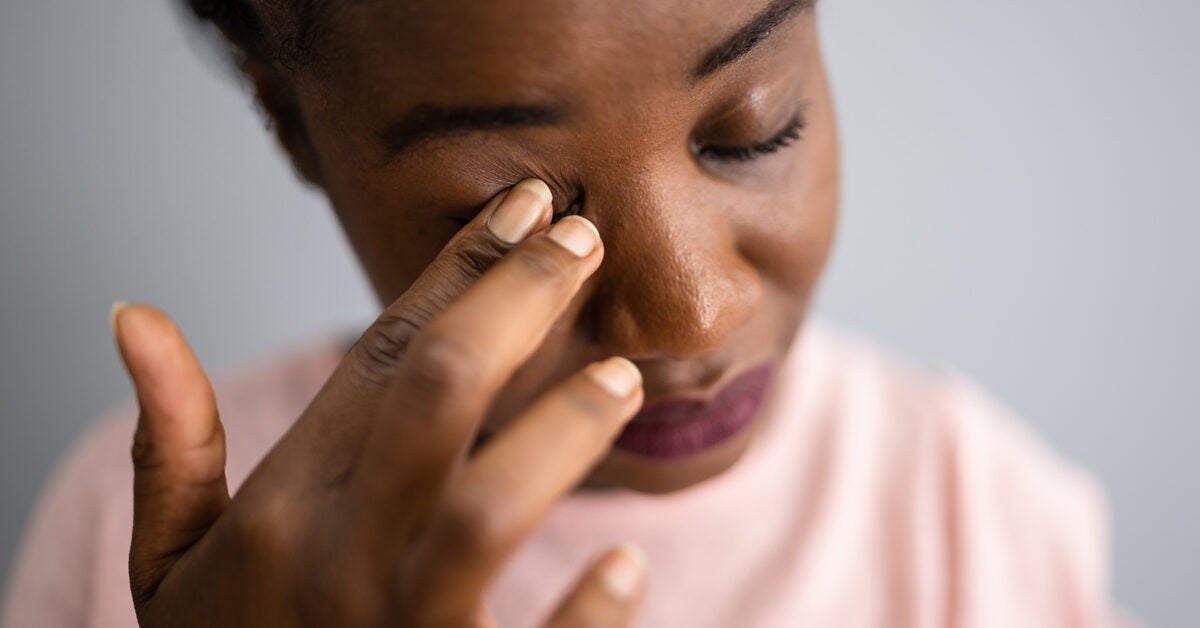How to Cure Blepharitis Fast: What Works and When to Get Help - Healthline

You may have to see a doctor to find out if an infection is behind the blepharitis. If inflammation is the cause, home treatment may be an effective way to quickly clear up symptoms.
Blepharitis is a condition that affects the eyelids. It causes redness, irritation, a feeling like there's something in the eye, and dandruff-like crusts.
There are many potential
Blepharitis can be an isolated event or a chronic condition that keeps coming back. Most people who have blepharitis
If you have blepharitis, it's important to follow a care regimen of softening crusts with a warm compress and cleaning the lid with dilute baby shampoo
If you have chronic blepharitis, doing this routine every day can help keep blepharitis at bay.
Warm compress
A warm compress is an important part of blepharitis home treatment. A compress is a clean cloth soaked in warm water. Laid over the eyelids, the compress
To fully remove the crusts,
Eyelid massage
Gently massaging the eyelid helps if you have posterior blepharitis. This type of blepharitis
Warm water rinse
A warm water rinse is an easy way to clear away flakes from the eyelid without causing irritation. You may want to gently rinse the eyelid after using a compress and performing a gentle eyelid massage.
Artificial tears
While artificial tears won't resolve crusts or flakes, they may help with other symptoms of blepharitis like redness and swelling. They can also relieve dry eye. Artificial tears are available over the counter in most pharmacies as eye drops.
Dandruff shampoo
If you also live with dandruff, it may be a contributing cause of your blepharitis. Using a dandruff shampoo on your scalp can help relieve symptoms of both conditions, reducing the number of skin flakes.
Black tea bags
There's little research on the effects of black tea bags on blepharitis. But this home remedy may work in a way similar to a warm compress.
Simply steep the tea bags in hot water as you would to make tea. Remove the bags and squeeze out the excess water. Place them over closed eyelids for several minutes as you would a compress. Make sure the tea bags aren't too hot before you put them on your eyelids.
Tea tree oil
Tea tree oil is a traditional antiseptic, in particular
A 2021 study in the American Journal of Ophthalmology found that tea tree oil shampoo worked better than eyelid shampoo to manage symptoms of meibomian gland dysfunction. However, the same study found the tea tree oil shampoo caused more eye surface irritation.
Anti-inflammatory diet
Following an anti-inflammatory diet may reduce inflammation all over the body. This may help to reduce the symptoms of blepharitis caused by inflammation. The Mediterranean diet is one example of an anti-inflammatory diet.
Omega-3 fatty acids
Foods rich in omega-3 fatty acids, like salmon, may help support the health of the meibomian glands. You can also purchase an over-the-counter supplement to increase your intake of these nutrients.
As important as home remedies are for treating blepharitis, there are some treatments you may want to run by your doctor before trying. For example, apple cider vinegar is sometimes offered as a treatment for blepharitis. However, there's no evidence that apple cider vinegar is effective, and it may actually be harmful.
According to the National Capital Poison Center, if vinegar gets into the eye, it may cause damage to the cornea. A
Most people with recurring blepharitis will have to keep up with a daily eyelid-cleaning routine. During a breakout of symptoms, home treatment can help you get rid of crusts and flakes.
If you require antibiotics, the course of treatment may be
Consider contacting a doctor if your symptoms do not get better with home treatment. Also, if it's your first time having blepharitis, consider seeing a doctor to determine whether you have an acute infection that requires prescription treatment.
Home treatments can work alongside medical treatments if you need that additional help to get blepharitis under control.
- Antibiotics: Prescription ointments, eye drops, or oral antibiotics may be appropriate if you have a bacterial infection.
- Steroid blepharitis eye drops: Corticosteroid eye drops help control eye inflammation and may help reduce swelling and redness.
- Immune system medications: Medications like cyclosporine A (Restasis) are
prescribed for dry eye disease. A doctor may find it suitable to recommend this for blepharitis. - Microblepharoexfoliation: This treatment goes by the brand name BlephEx. It uses a rotating sponge to remove bacteria and toxins.
- Intense pulsed light (IPL): IPL involves applying infrared light to the eyelids. It's intended to reduce inflammation and clear meibomian gland blockages.
- Thermal pulsation: This is known by the brand LipiFlow. It applies heat and massage to the inner and outer eyelids, releasing oil clogs in the meibomian glands.
- Thermal expression: This is done by a newer experimental treatment called MiBoFlo. The device combines heat applied to the outer eyelid with manual massage to improve meibomian gland function.
Treating the underlying cause can also be an important part of resolving blepharitis. If rosacea, dandruff, or other conditions are causing your symptoms, treatments for those conditions may lead to improvement.
Blepharitis usually responds quickly to home treatments like warm compresses, eyelid massage, and warm water rinse. If blepharitis is the result of an infection a doctor may prescribe antibiotics.
If home treatments are ineffective or if blepharitis recurs, there are newer treatments available, such as light and heat therapy.
Comments
Post a Comment